Bake a Sponge cake with Caramelized sugar
August 25, 2014 by admin
Filed under Cakes-Baking, How to make...for beginners
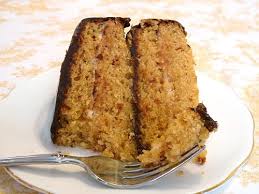 Cakes are universally popular during birthdays and special occasions at home. We have a practice of baking cake additionally from the home made butter. The butter is fresh and ideal for making soft and spongy cakes.
Cakes are universally popular during birthdays and special occasions at home. We have a practice of baking cake additionally from the home made butter. The butter is fresh and ideal for making soft and spongy cakes.
Cake baking is no great skill. The secret of baking cake successfully lies with the proportions of the ingredients. Any mismatch will make the cake become a disaster. Therefore recommend you to go by weight and not measures for basic ingredients.
Cake baking process is no rocket science but basic awareness of the role for each of the ingredients during the basic process needs understanding for the users.
You can bake cakes in various different ways by experimenting with different fruits and flavors. Today we shall go thru the recipe of baking a sponge cake with caramelized sugar.
Ingredients for Sponge cake with Caramelized Sugar:
- All-purpose flour /Maida: 200 gm
- Butter (home made or saltless variety): 200 gm
- Sugar:175 gm+ 25 gm for caramelization
- Eggs: 200 gm
- Cardamom / Elaichi: 6 nos
- Patta : 1 inch piece
- Vanilla essence: 1.5 tsp
- Cashewnut / Kaaju: 10 nos
- Raisins / Kismis: 10 nos
- Baking powder: 1+1/2 tsp
Procedure for preparing Sponge cake with Caramelized Sugar :
Method:
- Sieve maida and baking powder together for 2 times, this will ensure uniform mixing. Powder sugar in a mixer. Transfer in a mixing bowl.
- Eggs also needs to be weighed, you can only use the white of the egg to balance the weight. Beat eggs in the same mixer.
- Add butter ( kept at room temperature) to the powdered sugar in the mixing bowl. Mix well with a plastic ladle or with your hand. After 3 to 4 mins of constant mixing add beaten eggs. Mix all the ingredients again for 3 to 4 mins.
- To this base add maida and mix vigorously to remove any lumps of unmixed flour. Add the caramelized sugar and thoroughly mix the batter.
- After 5 mins add cashew,raisins and vanilla essence. It is ready to transfer into the baking oven.Retain a few for decorating the cake.
- Meanwhile grease the baking pan with butter. Sprinkle some dry maida onto the baking pan to form a thin layer of maida. Now pour the cake batter into the pan.Decorate with cashew and raisin on top.
- If you are using the micro oven, preheat oven to 200 deg C for 10mins. Bake in preheated oven at 200 degree C for 10 mins, then reduce temperature to 180 deg C and bake it for 30-35 mins.
- Take a tooth pick and prick the cake till the base to check whether it comes out clean or not. If the mixture is still sticky, then bake it for another 10 minutes. Check it again and turn off the oven.
- Remove pan from the oven and cool for about 5 minutes before flipping it over onto a platter. Use a butter knife to lightly run along the edges of the cake; make sure that the edges are all loose before you flip it.
- I use the cake oven with a sand tray accessory at the bottom. I heat the sand tray for 4 to 5 mins and then decrease the flame of the gas stove. I place the cake pan above the sand tray. The oven has to be kept at low flame for 25 mins.
- Sponge Cake with caramelized sugar is ready. Let it cool down for a while and then separate it from the pan with the help of a knife. Cut the cake in the shapes you desire and serve it.
- Pre-work: You need to caramelize sugar on the pan. Heat sugar on a thick bottomed pan. When it melts and become liquid keep stirring. It will start changing color and when it becomes dark brown you can add a few spoons of water and put off the flame. The other option will be to cool caramelized sugar on a tray of ice.
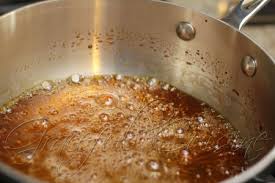
You will receive a lot of appreciation for the baked cake. The aroma of fresh cake baking will be all over your house and out in the open air too.
My kids will visit the kitchen often mainly because of the aroma and the curiosity to know what other varieties I’m actually attempting that day.
Try this recipe and enjoy healthy cooking. For more tasty recipes visit our Facebook page and Google+ page.
Atukulu Laddoo-Special sweet for Janmashtami
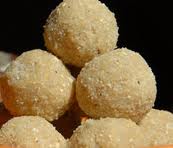 Krishna Janmashtami is the annual celebration of the birth of Lord Krishna, the eight avatar of Lord Vishnu. Krishna Janmashtami is also called Gokulashtami , Krishna Jayanthi and is celebrated in various ways in different parts of India. Plenty of games are associated with Janmashtami- Dahi handi is a popular game in which the pot filled with butter, milk and water is hung at a height of 20 to 30 metres. The young children will form a pyramid and break the pot. Water will be sprayed constantly on the climbers to prevent them reach the height.
Krishna Janmashtami is the annual celebration of the birth of Lord Krishna, the eight avatar of Lord Vishnu. Krishna Janmashtami is also called Gokulashtami , Krishna Jayanthi and is celebrated in various ways in different parts of India. Plenty of games are associated with Janmashtami- Dahi handi is a popular game in which the pot filled with butter, milk and water is hung at a height of 20 to 30 metres. The young children will form a pyramid and break the pot. Water will be sprayed constantly on the climbers to prevent them reach the height.
During Janmashtami children dress like Baal Krishna, they hold a flute and a peacock in the head band, wear a dhoti only as a lookalike of Bal Krishna. Special puja is performed in the evening when the childs legs are dipped in color and the colored impression is made on the floor when the child visits your home. This is believed to be symbolic of Nand Gopal i.e Bal Krishna coming to your home.
In some parts of India the image or statue of Lord Krishna is placed in swings and cradles and are kept swinging by devotees. All the Krishna temples are decorated and this also happens to attract pilgrims to places associated with Krishna’s childhood like Mathura, Gokul and Vrindavan. The Guruvayoor temple at kerala is also popular on Krishna Janmashtami.
Fasting is followed by most devotees and they break the fast with vegetarian dishes. Sweets are also distributed on this special occasion. Today I’m sharing a sweet recipe that is new and will certainly be liked.
Ingredients for Atukulu laddoo:
- Atukulu / Poha /Pressed rice : 1 cup
- Vermicelli: 1/3 cup
- Moong gram: ½ cup
- Sugar: ½ cup ( powdered)
- Cardamom/ Elaichi: 8 nos ( powdered)
- Kaaju / Cashewnut: 6 nos ( chop into small pieces)
- Kismis / Raisins: 6 nos ( slice into halves)
- Ghee: 1/3 cup
Procedure for preparing Atukulu laddoo/ Poha laddoo- Janmashtami special sweet:
Method:
- In a kadai fry Atukulu/ Poha, Vermicelli and Moong gram separately. Ensure they do not change color or burn.
- Transfer into separate plates. Allow it to cool.
- In a mixer powder Atukulu/ Poha, Vermicelli,Moong gram and Sugar separately.
- Heat 2 tsp of ghee in the same kadai, add chopped Kaaju and Kismis.Remove Kadai from flame.
- Mix all the powders together. Add elaichi powder and fried Kaaju, Kismis.
- Heat the remaining ghee and add spoon by spoon to the mixed powders. Mix all the ingredients and try to make small balls .
- Atukulu laddoo / Poha laddoo is ready to serve.
Variations in this laddoo will include addition of Dessicated coconut:1/3 cup. You can alternate vermicelli with oats as it is commonly available in most homes.
It is important that you fry and powder the ingredients separately as each ingredient has its own time to get heated and powdery too.
The flavors of cardamom and ghee will be so good that you will look forward to have more sweets.This delicious and grainy texture of laddoos will be a big surprise and a huge hit among your family and friends.
Go ahead and try this variety of laddoo or rava laddoo, til laddoo this Janmashtami. Enjoy the celebrations!!
Try this recipe and enjoy healthy cooking. For more healthy and tasty recipes visit our Facebook page and Google+ page.
Special Falahari recipe: Chatpati Sago Chaat
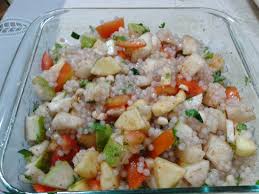 Chatpati Sago Chaat is a special recipe prepared during fasting days. In India fasting is followed for many festivals and during this duration women break the fast with light meals and healthy diet too.
Chatpati Sago Chaat is a special recipe prepared during fasting days. In India fasting is followed for many festivals and during this duration women break the fast with light meals and healthy diet too.
Falahari dishes are made mostly on days fast is observed. Falahari is derived from phal or fal which means fruits and ahaar which means food or diet. Basically phalahari means a diet which consists of fresh fruits. along with fruits even vegetables, herbs, dry fruits, some cereals and yogurt is a part of phalahari diet.
Sago chaat is an oil free dish. You will require boiled sabudhana / sago to prepare this dish. People of all ages love chaat and you can prepare chatpati sago chaat that is simple to prepare yet delicious and mouthwatering too.
Chatpati sago chaat is a combination of cooked sabudhana ,fruits and vegetables. Let’s go through the ingredients required and the procedure to prepare.
Ingredients for Chatpati Sago Chaat:
- Sago or Sabudhana: ¾ cup
- Tomato: 1
- Guava: ½
- Apple: ½
- Green Chilli (used for mirchi bajji) -2 tsp (finely chopped)
- Groundnuts / Peanuts: handful (roasted and remove peel)
- Pomegranate: a handful
- Grapes: a handful
- Coriander leaves: 3 tbsp ( chopped)
- Mint leaves: 1 tbsp ( chopped)
- Lemon juice: 1 tbsp
- Sugar: 2 tsp
- Red chilli powder: ¼ tsp ( optional)
- Chaat masala: ½ tsp
- Salt: 2 pinches
- Crushed Pepper:1/4 tsp
Procedure for preparing Chatpati Sago Chaat:
Method:
- Wash and soak the sago in water for 2 hrs.
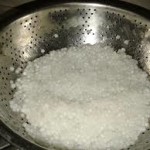
- Boil the soaked sago and strain through a colander. Add fresh water on this and you will get clear sabudhana. Transfer into a large serving bowl.
- Peel Apple, cut all the fruits and add to the serving bowl. Add roasted peanuts, coriander and mint leaves, Sugar, red chilli powder, chaat masala, crushed pepper, salt. Mix well with the help of two forks.
- Sprinkle with lime juice. Mix again and serve.
Chatpati sago chaat is nutritious and filling too after a long fast. A good way to break the fast.
Pineapple, pear are also a good combination for this falahari chaat. You can add sweet and sour tamarind chutney in place of sugar.
Try this recipe and enjoy healthy cooking. For more healthy and tasty recipes visit our Facebook page and Google+ page
Also read:
Dalia Salad- Healthy Recipe for Weight loss
My experiences in the kitchen-Part 1, Part-2
Dalia Salad- Healthy Recipe for Weight loss
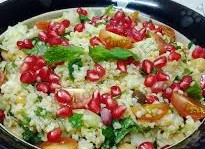 Dalia salad is a healthy recipe ideal for weight loss. Dalia is basically broken wheat and is called bulgar. Dalia is popular in India and is introduced for a child in the form of porridge. Dalia is high in fibre, low in fat, diabetic friendly and ideal to lose weight. You can make interesting recipes to make the cooked dalia tastier and healthier.
Dalia salad is a healthy recipe ideal for weight loss. Dalia is basically broken wheat and is called bulgar. Dalia is popular in India and is introduced for a child in the form of porridge. Dalia is high in fibre, low in fat, diabetic friendly and ideal to lose weight. You can make interesting recipes to make the cooked dalia tastier and healthier.
Today I’m sharing a delicious salad made from dalia and raw veggies. This salad will provide good amount of vitamins and minerals to the body.
Ingredients for Dalia Salad:
- Dalia or Bulgar: ½ cup
- Onion: 1 small (finely chopped)
- Tomato: 1 small (chopped)
- Carrot: 3 tbsp (grated)
- Lemon juice: 2 spoons
- Olive oil: 1 tsp
- Crushed pepper: ¼ tsp
- Fresh coriander leaves: 1 tbsp(finely chopped)
- Fresh mint leaves: 1 tbsp(finely chopped)
- Pomegranate (Anar): a handful- optional
- Salt: as per taste
- Cooking oil / Ghee: 4 tbsp
Procedure for preparing Dalia Salad:
Method:
- Pressure cook dalia in 2 cups of water.
- In a large wide bowl add chopped onions, chopped tomatoes, grated carrot, chopped coriander and mint leaves, pomegranate, lemon juice, olive oil, crushed pepper, salt and mix well.
- After dalia has cooled down, add cooked dalia to the above mixture . Mix well.
- Dalia Salad is ready and can be served immediately. Yo will love the flavors of olive oil, lime and crushed peppers .
Broken wheat has high fiber content and the dish is filling. You can have Dalia Salad for breakfast or prepare when you plan for a light dinner too. Popular dishes made with dalia are payasam, upma, puttu, etc.
Try this recipe and enjoy healthy cooking. For more healthy and tasty recipes visit our Facebook page and Google+ page.
Please add a comment and, if you like the post, feel free to share it with your friends.









